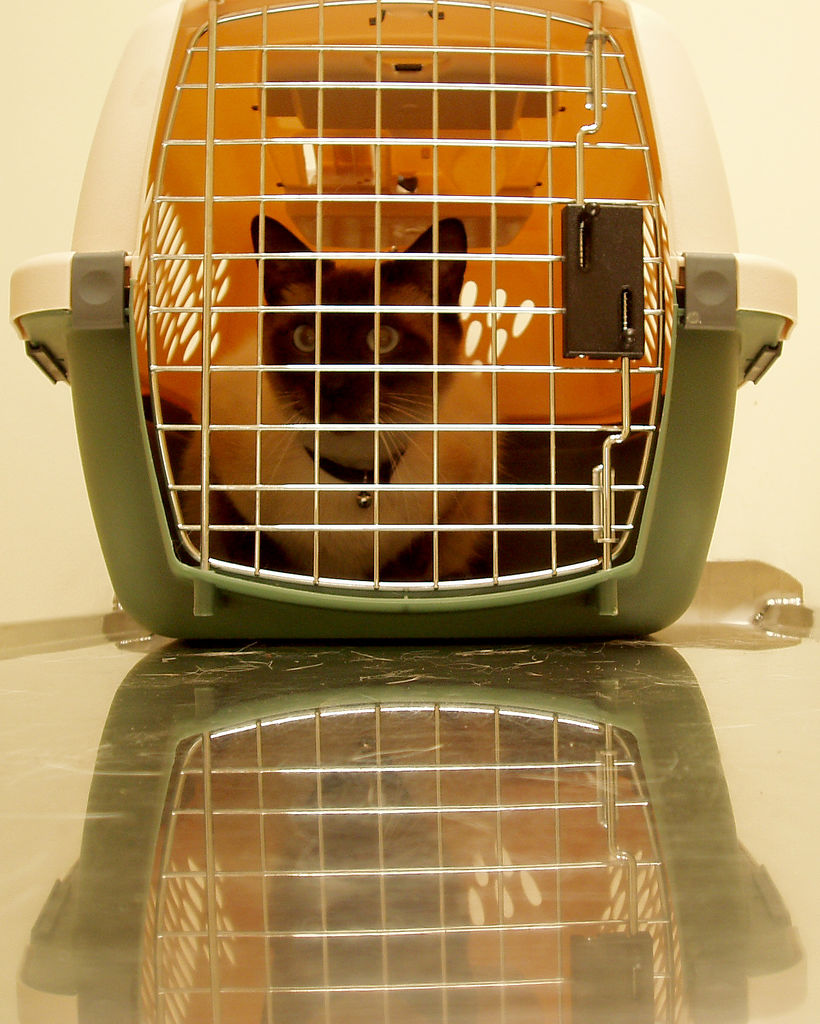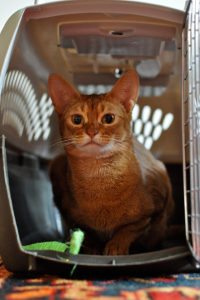Cats CAN Be Calm Around Carriers

 Whether a trip in the car or a trip to the vet, a cat carrier is usually involved. And most felines are famous for fleeing the scene at the mere sight of them. But fear not, furry friend fanciers, there ARE ways to nip this particular “scaredy cat” scenario in the proverbial bud.
Whether a trip in the car or a trip to the vet, a cat carrier is usually involved. And most felines are famous for fleeing the scene at the mere sight of them. But fear not, furry friend fanciers, there ARE ways to nip this particular “scaredy cat” scenario in the proverbial bud.
The first rule of paw is that YOU must keep calm. If you exhibit any signs of anxiety by assuming some epic struggle lies ahead, your sensitive kitty will “sixth sense” your tension and grow stressed in the blink of an eye.
To reduce the fear factor associated with the sudden, surprise appearance of the carrier, accustom your cat to its shape, size and smell by leaving it out all the time. If you use a kennel-type carrier, remove the door and line the bottom with a soft, plush towel, thereby converting it into a cozy cat hideaway. Start placing several tempting treats near the carrier, and gradually progress, with each successful “treating”, to putting them closer and closer until they’re finally inside. Or you can opt to feed your cat her meals near, on, and then, ultimately, inside the carrier.
 Once she’s grown comfortable being in the carrier, replace the door. On subsequent training sessions, close the door while your cat is in there, promptly open it again, and offer her a treat. Work slowly but surely towards closing the door with her nestled inside, then walk around the room with the carrier awhile before setting it back down.
Once she’s grown comfortable being in the carrier, replace the door. On subsequent training sessions, close the door while your cat is in there, promptly open it again, and offer her a treat. Work slowly but surely towards closing the door with her nestled inside, then walk around the room with the carrier awhile before setting it back down.
Move on to getting your cat comfortable in the car. Put her in the carrier, place the carrier inside the car, but don’t start the engine. Allow your cat to adjust to being there, and if she’ll accept them, offer her treats. Once you’re assured that she’s at ease in the car, your next training sessions should progress from simply starting the engine, to going for a drive around the block, to taking successively longer drives.
In short, by allowing the carrier to remain in plain sight, it should no longer be seen as an object of fear by your cat, but rather as a source of security. A private “go to” place for some quiet time or a tranquil catnap. It also serves a second, perhaps, even more essential purpose – being conveniently within reach in case of an emergency.
Whether your cat is, one day, injured or ill, or a disaster, natural or manmade, forces you to evacuate your home, think of the precious seconds you’ll save knowing just where that carrier is.
